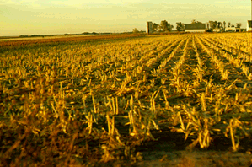 For over 36 years, A.S.L. & Associates developed extensive experience and resources
for the purpose of assessing the potential impacts of air pollution
on the environment. Its clients included major industrial, environmental,
and governmental groups. In 2017, A.S.L. & Associates migrated
its capability to a new company, A.S.L. & Associates, LLC,
which is under the direction of the Company's President and Founder,
Dr. Allen S. Lefohn.
The company continues the tradition of focusing on environmental
issues that directly link pollutant exposure with both human
health and vegetation effects. Combined, individual staff members
have over 50 years of experience working in the exposure- and
dose-response research area.
For over 36 years, A.S.L. & Associates developed extensive experience and resources
for the purpose of assessing the potential impacts of air pollution
on the environment. Its clients included major industrial, environmental,
and governmental groups. In 2017, A.S.L. & Associates migrated
its capability to a new company, A.S.L. & Associates, LLC,
which is under the direction of the Company's President and Founder,
Dr. Allen S. Lefohn.
The company continues the tradition of focusing on environmental
issues that directly link pollutant exposure with both human
health and vegetation effects. Combined, individual staff members
have over 50 years of experience working in the exposure- and
dose-response research area.
A.S.L. & Associates is unique
in its approach toward developing solutions to complex issues. The company teams with leading scientists from around
the world to focus on complex scientific issues. Because our
research is cutting edge, more than 90% of our results are published
in major peer-reviewed scientific journals. At times, A.S.L.
& Associates is asked to prepare materials that are presented
to those responsible for the air pollution standard-setting process.
issues. The company teams with leading scientists from around
the world to focus on complex scientific issues. Because our
research is cutting edge, more than 90% of our results are published
in major peer-reviewed scientific journals. At times, A.S.L.
& Associates is asked to prepare materials that are presented
to those responsible for the air pollution standard-setting process.
A.S.L. & Associates is unique
in its approach to performing its research. Besides receiving
research funding from its clients, A.S.L. & Associates funds
its own research. A.S.L. & Associates believes that in economic
upswings, as well as economic downswings, it is important to
continue to develop the research results that provide important
inputs into learning more about the relationship between air
pollution exposure and (1) human health and (2) vegetation effects.
For the purpose of informing the general public, researchers,
and policymakers, research results are placed on A.S.L. &
Associates' web site (asl-associates.com). The web site is visited by thousands from
around the world each month. Some of the most popular pages visited
on the web site are those associated with (1) the "piston
effect" (i.e., slowing down of reductions of the higher
hourly average concentrations) and how it affects the reduction
of hourly average surface ozone concentrations as air pollutant
emissions are reduced, (2) natural background of surface ozone
and its relationship to the "piston effect", (3) the
biological importance of the higher hourly average air pollution
concentrations more than the mid- and lower-level values for
both human health and vegetation effects, (4) our exposure- and
dose-response research on vegetation and human health, (5) our
global sulfur emissions database from 1850-1990, (6) spatial
interpolation of surface ozone (i.e., kriging), (7) concerns
about assumptions associated with epidemiological modeling, (8)
our peer-review publications list, and (9) our Albert Einstein
quotations with references.
The Company's President and Founder,
Dr. Allen S. Lefohn,
and his research associates have established an outstanding reputation
for providing research and analyses in several major areas. Some
of these research areas are
Standard-Setting
Evaluations
- The evaluation
of the limitations associated with exposure models that relate
to risk assessment methodologies.
- Why specific human health
and vegetation exposure metrics behave differently as emissions
change.
- The evaluation of the
strengths and weaknesses associated with epidemiological methodology and the standard-setting process.
- The evaluation and assessment of ambient air quality standards
and critical levels/loads.
- The evaluation and assessment of using the W126 cumulative ozone exposure index
as a secondary standard to protect vegetation.
- Developing the scientific
rationale for explaining the "piston" effect, which affects our ability
to attain surface ozone standards.
- The identification of
areas in the United States that violate
Federal ozone, PM-2.5, and other criteria pollutant standards.
- Characterizing natural background ozone levels and how they relate
to the standard-setting process.
- Evaluating the occurrences
of elevated short-term
5-minute SO2 average
concentrations in the U.S.
- The evaluation
of mathematical models that relate short-term 5-minute SO2 concentrations
with hourly average concentrations.
Human
Health Effects
Vegetation
Effects
- The development of vegetation
and human health exposure-response
relationships.
- Explore the efficacy of
various defense mechanisms for helping to define "effective"
dose.
- The development of a bridge that allow for the use of exposure-response and dose-response
data for predicting vegetation effects.
- Explore the efficacy of
applying the U.S. 8-hour ozone standard to protect forests and
agricultural crops.
- Identify "areas of concern" for areas that may be impacted
by ozone exposures for forests in North Carolina, Tennessee,
and South Carolina.
- Summarize ozone exposures that may have an effect on vegetation
grown in the Southern Appalachian region of the United States.
- Summarize the state-of-knowledge
for the U.S. EPA of the status of the use of relevant exposure indices for predicting ozone effects on vegetation (Chapter
9 of the EPA's 2006 Ozone Criteria Document).
- Develop exposure-response relationships for tree seedlings using data from
five intensive Southern Commercial Forest Research Cooperatives.
- The design
of vegetation air pollution exposure studies that mimic ambient
conditions.
- Application of geographic information system (GIS) approaches that integrate vegetation
effects with exposure information.
Air Quality
Characterizations
- Determine ozone trends analyses on anthropogenically influenced monitoring
sites in the United States and on worldwide background ozone
"signature" monitoring sites.
- The application of mathematical interpolation techniques (e.g., kriging) to predict ozone
exposures across the United States.
- The identification of
clean sites in the
United States and
other parts in the world that can serve as indicators of natural
background for surface ozone and other pollutants.
- The identification of
clean sites in the United States that can serve as indicators
of natural background for particulate matter.
- Summarize the state-of-science
for the National Acid Precipitation Assessment Program (NAPAP)
for the air quality characterization of agricultural and forested
areas for vegetation effects purposes.
- Summarize the state-of-knowledge
for the U.S. EPA of the air quality characterization of ozone
for urban and rural areas for health and vegetation effects purposes
(Chapter 4 of the 1996 Ozone Criteria Document and Chapter 3
of the 2006 Ozone Criteria Document).
- The development of scientifically
defensible approaches to predict ozone levels as a function of
emission reductions (i.e., rollback methods).
- The characterization of
air pollution co-occurrences under ambient conditions for designing
human health and vegetation exposure experiments.
- Defining air quality characterization in biologically meaningful terms.
- Develop a global sulfur emissions inventory for purposes of the development of
global climate models.
Some of the published research results
can be reviewed at our publications web page. We welcome your suggestions on future
environmental research efforts as well as your participation
in our efforts. For further information, please contact us at